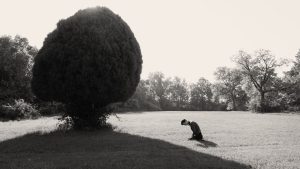In this article, I’m going to cover ISO, Aperture, Shutter speed, and White balance. Each of these settings is important for low-light photography. Once you know what these settings are for your camera, it’s easier to make the correct adjustments. Several other camera settings can affect the quality of your photos, but ISO is probably the most important.
ISO
Choosing the right camera setting is vital if you’re photographing in low light. High ISO levels introduce noise into your photos, making colors and textures appear odd. While this can be an unfortunate outcome, it can also be a stylistic choice for specific photos. Some photos are best captured in black and white, which eliminates the problem of noise.
A low ISO level is best for low light photography. The lower the ISO, the less noise the image will contain. A higher ISO number will produce images with more noise, but newer DSLRs can handle huge ISO numbers without sacrificing quality. To test the ISO setting on your camera, zoom into the darkest areas and check for any noise.
Aperture
Understanding how to adjust your Aperture camera settings for low-light photography is vital to capturing the perfect image. The amount of light that your camera can handle drops off dramatically after sunset. Shooting in dim light can pose challenges when photographing a street or an indoor scene. To avoid overexposure, you must use a lower shutter speed or ISO. You should also use a flash or speed light if you have one. Speed lights are relatively cheap nowadays and can help you take better low-light shots.
Although there are several ways to use an aperture, the general rule of thumb is that a wider aperture is better for low-light photography. This is because the aperture allows more light to pass through the lens.
Shutter speed
When shooting in low light, the shutter speed is critical. It determines how much light your camera can gather during exposure. In low light, a slower shutter speed will blur the movement in the scene. This is especially important when trying to take pictures of moving subjects. But be careful – a slower shutter speed will also cause your camera to shake, which makes for a blurred image.
You can also increase the shutter speed or the aperture to capture more light. This will increase the light passing through the lens, improving exposure. However, this will also make your images grainy and noisy.
White Balance
If you’re planning to take pictures under low light conditions, you must learn how to use the white balance camera settings. This is especially important if you’re shooting on a cloudy day, as this setting will warm up your subject and surroundings and improve the quality of your shots. In other cases, you’ll need to use flash mode to provide more light. Fortunately, the flash mode will help you select the correct White Balance under these circumstances.
Changing the white balance in your camera is easy and can be done using a dedicated button or setting on the menu. Choosing the correct white balance setting for your shot is essential if you want natural-looking skin tones and colors in your images. Using the wrong white balance setting will cause your photos to look too warm or too cool.
Camera Positioning
When shooting in low-light conditions, you need to carefully consider how to position your camera to capture the best possible photos. In low-light situations, autofocus may be compromised, and object recognition will be hampered. To avoid this problem, it is best to shoot in RAW (Raw: image format), as this allows for more flexibility in post-processing.
Generally, you should shoot in as much light as possible. Even if you’re indoors, try to use natural light sources whenever possible. Candles, streetlights, and moonlight are all examples of proper lighting sources. Once you’ve set your camera’s aperture and shutter speed appropriately, your camera should be able to pick up the valuable light from these sources.





More Stories
6 Tips for a Successful Product or Service Launch
First Mover Advantage: What It Is and How To Take Advantage of It
Find the Best Women’s Perfume Online